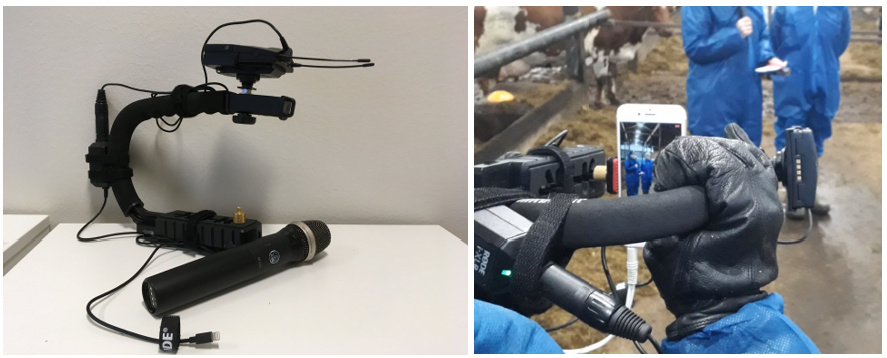What is MataDigi?
MataDigi project was launched at the end of 2018 funded by European Agricultural Fund for Rural Development (EAFRD). Purpose of the project was to modernize ways to provide agricultural entrepreneurs new knowledge and information using online technologies. Project consisted of two phases in which facilitated small group processes and non-facilitated open discussion-based processes were piloted. In addition to the processes, new technologies were tested with participants.
The basis for the project was to build new communication and information transmission processes on top of peer-to-peer communication. In former education projects farmers have considered peer-to-peer discussions and sharing of knowledge as one of the most effective ways to increase one’s expertise and to learn new things and ways of doing. Thus, we wanted to build on this experience, presenting different ways for collegial discussion and sharing of best practices.
First Project phase – Small groups
First phase of the project covered processes performed in small groups. Processes consisted of different sets of expert feed, synchronous / asynchronous activities in online platforms and putting the knowledge into practice. Two small groups were formed, the first focusing on dairy farming and the second in crop farming. Both groups were started with a face-to-face meeting which enabled grouping but also provided possibilities to familiarize participants with new technologies to be used. Participants were also able to present their ideas for the topics to be covered in the course of the pilots.
Examples of synchronous activities
During the synchronous activities, all participants were present at the same time, providing their knowledge and experience in the discussion. Expert feeds were used in the process, but experts were more like participants in the discussion than a lecturer. Before the meeting, the topics had been agreed, and participants had been able to provide the expert with questions. Meetings were organized in Zoom web conference system, which provided every participant a possibility to take part in the discussion and share their experience. These events we called Ponder meets because they allowed participants to ponder with colleagues and experts.
Another example of synchronous activities is Live farm visit. Visit was streamed via Zoom and provided participants with visual information of the practices in the farm in question, but also enabled bi-directional verbal communication throughout the visit. Present at the farm were the farmer, meeting host and a veterinarian. Also, a technical support and co-host were present at the farm. Participants were able to ask questions and take part in the discussion during the visit. In order to enable bi-directional communication and mobile video shooting to Zoom, personnel of DigiCentre of JAMK build a tool-set linking smart phone to wireless microphone and speakers.
Examples of asynchronous activities
Being an agricultural entrepreneur means tight time schedules, which in turn diminishes possibilities to take part in real-time events. Thus, we also wanted to provide possibilities for peer-to-peer communications asynchronously. Observation of local conditions throughout the growing season using a video chat (FlipGrid) enabled the participants to share their practices and learn from others’. Farmers posted short videos in different phases of the growing season, describing the conditions and actions performed in the fields. Also results like crop yield were described.
Second project phase – open piloting
While the first pilots were conducted in small groups, the second pilot phase was open for all interested in developing ways to modernize the information sharing practices. Although project was not for education, but for developing models of sharing information and knowledge, the materials and processes piloted are also applicable to educational purposes.
Open phase consisted of several different types of audio-visual materials providing agricultural information, partly enriched with interactive features. During the pilot, the participants were able to comment on, which kind of topics different technologies would be most suitable for. Examples of these materials are
- Podcast of farmer welfare
- Stress-free animal handling from the view of the handler using action camera
- Clover farming and nitrogen fixation enhanced with 360 pictures and interactive contents (Thinglink + Playposit)
- Thinglink enables embedding different kind of media into a picture or a video, also creating virtual tours is possible. Can be viewed using VR glasses.
- Playposit provides interactive tasks added to a video, such as multiple-choice questions, open questions etc. to increase cognitive processing of the contents.
Augmented reality technologies in orientation to dairy farm work tasks – thesis
A specific part of the project was a thesis piloting AR-mediated orientation instructions in a dairy farm. Farm employs personnel from several countries, thus instructions in English were needed, but also a form of instructions that could be understood even with lower language skills. Student performing the piloting familiarized herself with different AR-technologies and selected suitable ones for the piloting. A total of 13 introductory videos with both Finnish and English languages were created and stored in a web page providing possibility to select the language. Cow house was furnished with QR and Zappar codes, which allowed the employees to check instructions using smart phone.
Results and experiences
Network-mediated possibilities to take part in both synchronous and asynchronous events were considered working and effective among the participants. They were able to join the events among their daily routines without need to get a substitute. Live farm visit gave possibility to familiarize oneself with routines and practices of another farm without the need to travel. Health of the cattle was less compromised, when the visiting crew was kept as small as possible. Nevertheless, the experience was considered real-like among the participants.
On the perspective of experts taking part of the pilots, they considered models providing possibilities for communication and that participants were also interested to take advantage of this possibility. Also, participants highlighted the possibilities of sharing one’s experiences and expertise as effective ways in improving their entrepreneurship and adopting new practices.
In august, we will publish an online guide for applying piloted models. In our consideration, they are largely applicable to other fields than agriculture also. The guide will be published in Finnish, but a summary can be provided in English also. See also our presentation on Hubs on Stage!




